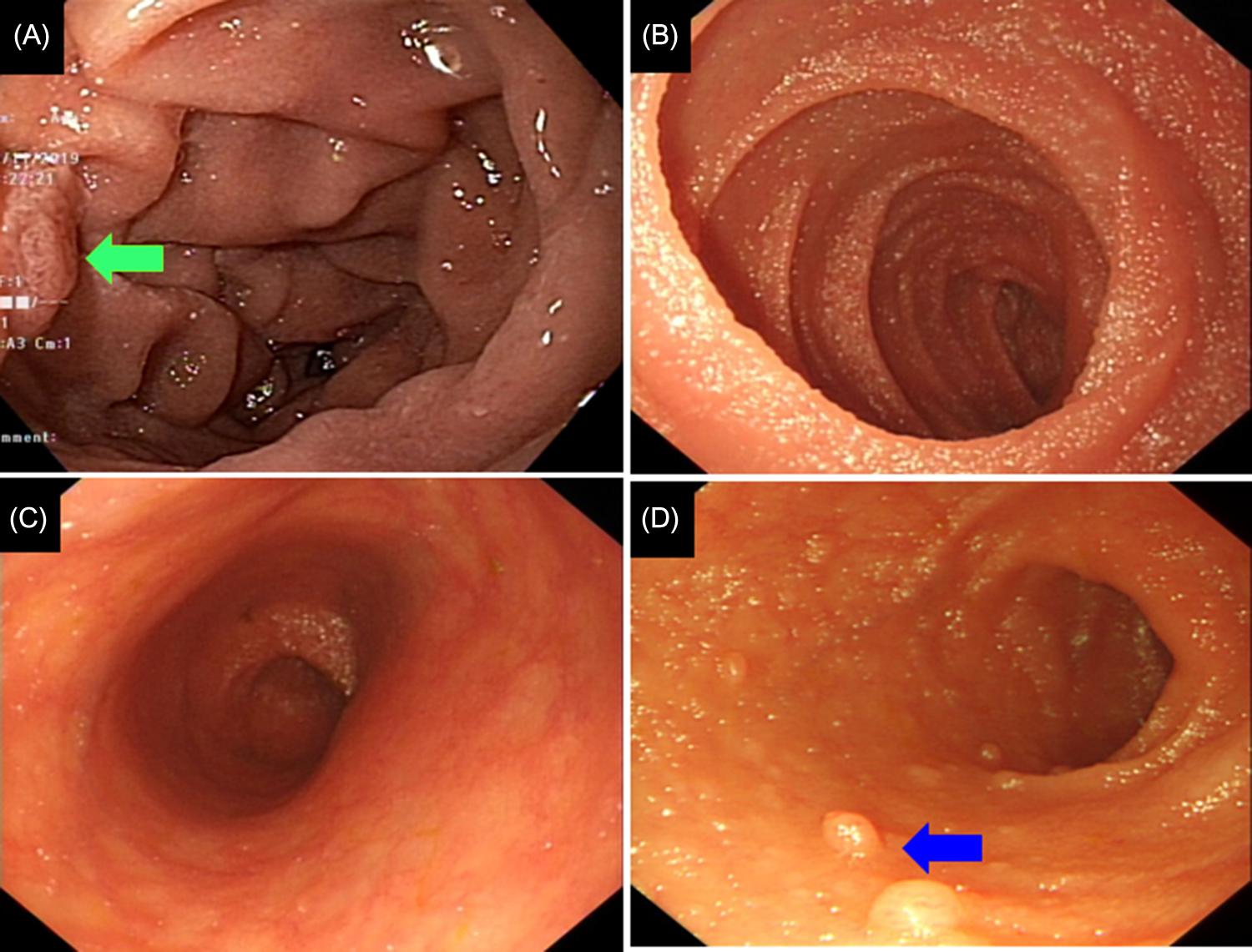Physical Address
304 North Cardinal St.
Dorchester Center, MA 02124
Crohn’s disease cryptogenic multifocal ulcerous stenosing enteritis Behcet’s disease inflammatory bowel disease intestinal tuberculosis mucosa-associated lymphoid tissue nonsteroidal antiinflammatory drug ulcerative colitis CD
CMUSE
BD
IBD
ITB
MALT
NSAID
UC
The small bowel, as the midsection of the gastrointestinal tract between the stomach and colon, is 5–7 m long and divided into the duodenum, jejunum, and ileum. The enteroscopy, which can not only make repeated observation but also take biopsy, is the most accurate visual modality for the detection of the pathology of the entire small bowel, especially the jejunum and ileum. Device-assisted enteroscopy can assess the segment of bowel beyond the conventional ileocolonoscopy or push enteroscopy. The enteroscopic appearance of the normal jejunum and ileum is yellow-orange tubular structure that is ringed by circular Kerckring folds and covered with finger-like villi . In addition, small veins and arteries, occasionally larger vessels, can be visualized (i.e., vascular pattern) in the submucosa of the normal jejunum and ileum. Some variants also appear in the small bowel, such as lymph follicles, which are sporadically distributed in the small bowel and most concentrated in the terminal ileum, especially in children . There is no sharp demarcation of anatomical structure between the jejunum and ileum. However, the ileum has sparser Kerckring folds, sparser and slightly shorter villi as well as more obvious vessels when than that in the jejunum ( Fig. 18.1 ).

In patients with inflammatory bowel disease (IBD), the small bowel involvement is indicative of more aggressive disease with poor prognosis. Small bowel disease is mainly seen in Crohn’s disease (CD) and rare in ulcerative colitis (UC) in a form backwash ileitis . For patients suspected of IBD, enteroscopy plays an important role in diagnosis, differential diagnosis, disease monitoring, assessment of treatment response, and even endoscopic treatment. On the other hand, performance of deep enteroscopy or device-assisted enteroscopy requires special equipment and technical skills. In patients with a prior history of bowel surgery, particularly strictureplasty and intestinal bypass surgery, enteroscopy can be challenging, due to altered bowel anatomy.
Become a Clinical Tree membership for Full access and enjoy Unlimited articles
If you are a member. Log in here